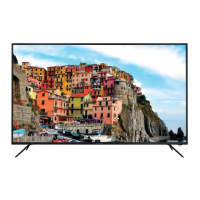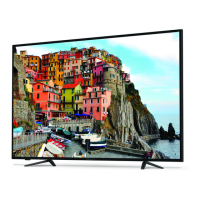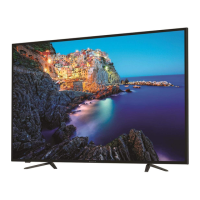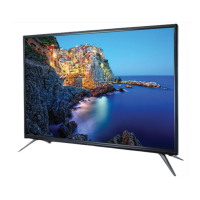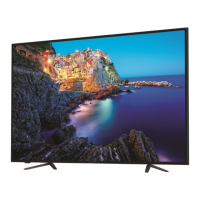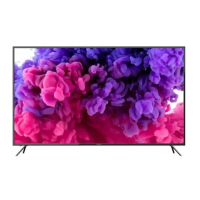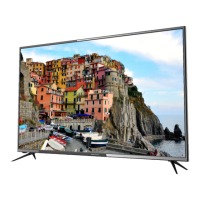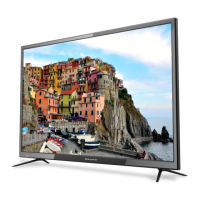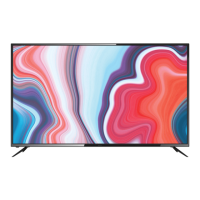Do you have a question about the Bauhn ATVU40-0416 and is the answer not in the manual?
Crucial safety precautions regarding TV placement and stability to prevent hazards.
Essential warnings about electrical safety, appliance modification, and usage.
Guidelines for safe electrical connections, cord management, and handling.
Rules and limitations for operating the TV, including adjustments and environment.
Instructions for safely cleaning and maintaining the TV unit.
Step-by-step guide for attaching the TV stand to the unit.
Guidance for safely mounting the TV to a wall using appropriate brackets.
Identification and function of controls located on the front of the TV.
Details of ports and controls on the rear panel of the TV.
Description of all rear panel input/output ports for connecting devices.
Instructions for connecting the TV to the main electrical power outlet.
Guide for connecting an external antenna for optimal TV signal reception.
Diagram and explanation for connecting devices via composite video (CVBS).
Diagram and explanation for connecting devices via component video (Y/Pb/Pr).
Instructions for connecting external devices using HDMI cables.
Guide for connecting audio devices using an optical cable.
How to connect USB storage devices for media playback and recording.
Instructions on how to turn the TV on and off using the power button.
Guide to the initial setup wizard for language, country, and channel tuning.
How to choose between different input signals like DTV, AV, Component, HDMI, USB.
Methods for changing channels using buttons or the channel list.
Adjusting the TV's audio volume and muting the sound.
Changing picture and sound settings for optimal viewing and listening.
Setting the TV to automatically turn off after a specified time.
Adjusting video aspect ratio and audio settings.
Displaying current program information on the screen.
Managing and accessing a list of preferred TV channels.
Switching between television and radio broadcast modes.
Enabling or disabling subtitles (Closed Captions).
Pausing the current video playback to hold the picture.
How to navigate and use the Electronic Program Guide for DTV.
Instructions for starting a direct recording of a DTV program.
How to access and play back recorded TV programs.
Guide to scheduling future recordings via the EPG.
How to pause live TV and resume playback later using a USB device.
Introduction to using USB devices for playing media files.
How to view photo files from a USB storage device.
How to play music files from a USB storage device.
How to play video files from a USB storage device.
How to view text files from a USB storage device.
Common remote control functions for playing media files.
How to navigate and operate the TV's main menu system.
Adjusting picture settings like mode, contrast, brightness, and color.
Adjusting sound settings like mode, treble, bass, balance, and S/PDIF.
Configuring clock, time zone, sleep timer, and OSD display duration.
Setting up system lock, channel lock, parental lock, and key lock.
Changing OSD language, TT language, audio/subtitle language, and PVR settings.
Configuring HDMI CEC for device control, auto power, and audio return.
Turning the blue background display ON or OFF for signal conditions.
Viewing TV model, software version, and support contact details.
Restoring the TV settings to their original factory defaults.
Resetting the TV to its original shipping configuration.
Updating the TV's software using a USB memory device.
Performing an automatic scan for available DTV channels.
Manually scanning for specific DTV channels.
Editing the channel list, including moving, skipping, or adding channels.
Viewing and managing scheduled recordings and reminders.
Displaying details about the received TV signal strength and quality.
Troubleshooting common issues like no power, no picture, or no sound.
Troubleshooting issues when the TV does not recognize a USB device.
| Screen Size | 40 inches |
|---|---|
| Resolution | 1920 x 1080 |
| Display Type | LCD |
| HDMI Ports | 3 |
| USB Ports | 1 |
| Smart TV | No |
| Aspect Ratio | 16:9 |
| Built-in DVD Player | No |
| Built-in Tuner | Yes |
| Weight | 7.5 kg |
